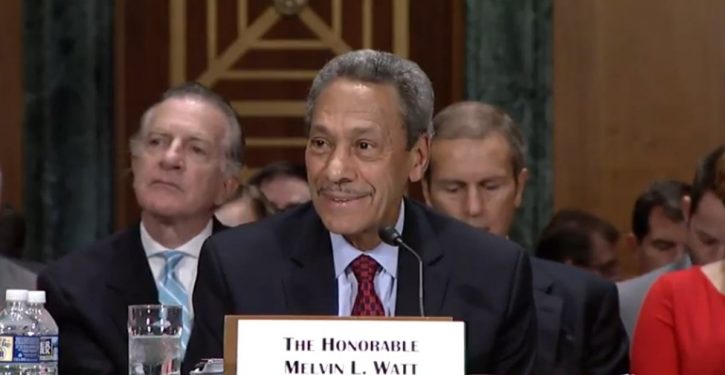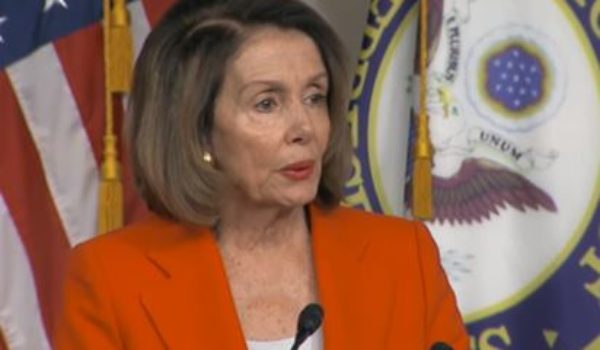
Bad government policies helped spawn the 2008 financial crisis. Those policies are still in place. One of them is lending money to non-creditworthy people to buy houses. As Bloomberg News reports, government guarantees underpin home loans to people who have already defaulted on their car loans or filed for bankruptcy. When the economy goes south, they will default on their home loans, too (at taxpayer expense). Thanks to the federal government’s “most important affordable housing program,” a loan officer gets a “nearly risk-free commission” for making loans that the “government ultimately bears the risk for.” As a result, a lender views a man with bad credit as an enticing prospect, even though, as Bloomberg News notes:
His car has been repossessed, something that would likely disqualify him at the Bank of America branch next door.
“Usually a repo that’s like three years old, we’re not really going to sweat that,” he assures the caller. “We’re pretty lenient here.” He steers his prospect to several $400,000 homes with swimming pools. “Have your wife check that out,” he says, referring to a remodeled kitchen with granite countertops. “She’s going to love it.”
Many of Christian’s customers have no savings, poor credit, or low income—sometimes all three. Some are like Joseph Taylor, a corrections officer who saw Christian’s roadside billboard touting zero-down mortgages. Taylor had recently filed for bankruptcy because of his $25,000 in credit card debt. But he just bought his first home for $120,000 with a zero-down loan from Christian’s company. Monthly debt payments now eat up half his take-home pay. “If he can help me, he can help anyone,” Taylor says. “My credit history was just horrible.”
Christian can do this kind of deal because he is, in effect, making the loan on behalf of the federal government through its most important affordable housing program. It’s a sweet deal: He gets his nearly risk-free commission. Taylor puts no money down. If things go south, the government ultimately bears the risk.
Making risky loans to people with bad credit in the name of “affordable housing” fuels housing bubbles and drives up the cost of housing, but it doesn’t increase home-ownership rates over the long run, as a Wall Street Journal article explains. Indeed, homeownership rates are higher in many countries that lack such risky “affordable housing” lending. That includes countries that are much poorer than the U.S. (like Chile), or much more crowded, and thus might be expected to have lower homeownership rates than the U.S.
Banks and mortgage companies have also been under pressure from lawmakers and regulators to give loans to people with bad credit, in order to provide “affordable housing” and promote “diversity.” That played a key role in triggering the mortgage crisis, judging from a story in the New York Times. For example, “a high-ranking Democrat telephoned executives and screamed at them to purchase more loans from low-income borrowers, according to a Congressional source.”
Will this presidential election be the most important in American history?
The executives of government-backed mortgage giants Fannie Mae and Freddie Mac “eventually yielded to those pressures, effectively wagering that if things got too bad, the government would bail them out.” But they realized the risk: “In 2004, Freddie Mac warned regulators that affordable housing goals could force the company to buy riskier loans.” Ultimately, though, Freddie Mac’s CEO, Richard F. Syron, told colleagues that “we couldn’t afford to say no to anyone.” Taxpayers ended up bailing Fannie and Freddie out after its risky loans went south.
Yet the Federal Housing Finance Agency doubled down on failure by ratcheting up federal affordable-housing mandates for Fannie and Freddie after the 2008 financial crisis. Its head, Mel Watt, was appointed by Obama in 2013, even though the policies he promoted in Congress helped causethe financial crisis. His tenure continued well into the Trump administration, since a statute mandated that he could not be fired without cause.
To promote “affordable housing,” Watt ordered Fannie Mae and Freddie Mac to substantially increase “lending to low-income families” and especially in “low-income areas” by 2017.
As housing policy expert (and former Fannie Mae executive) Ed Pinto notes, these affordable housing mandates contribute to housing bubbles that make housing less affordable for the average home buyer:
The Federal Housing Finance Agency (FHFA) doubled down on past policy failures when it mandated Fannie and Freddie to meet new expanded affordable housing goals. For more than 50 years, U.S. housing policy has relied on looser and looser mortgage lending standards in a misguided effort to promote broader home ownership and accomplish wealth accumulation, particularly for low-income households. For nearly half that time, Fannie Mae and Freddie Mac have been required to meet low-income housing mandates. These misguided efforts have achieved neither goal—the U.S. home ownership rate is no higher today than it was in the early 1960s and low-income households (those in the 20th to 40th percentile of the income distribution) had a median net worth of only $22,400 in 2013, the lowest inflation-adjusted amount in any of the Fed surveys dating back to 1989.
Simple economics explains why FHFA’s affordable housing mandates are doomed to failure. Research as far back as the 1950s has shown the liberalization of credit terms creates demand pressure that easily becomes capitalized into higher prices when undertaken in a seller’s market.
A 2011 book about the causes of the crisis by New York Times business reporter Gretchen Morgenson and financial analyst Josh Rosner, Reckless Endangerment, chronicled how “Fannie Mae and the government housing policies it supported, pursued, and exploited… brought the financial system to a halt in 2008.” Years after the crisis, financial analysts concluded that federal agencies and the GSEs played a larger role in causing the financial crisis than previously thought.
The two government-backed mortgage giants, Fannie Mae and Freddie Mac, bought up risky sub-prime mortgages partly in order to satisfy government affordable-housing mandates, as even the progressive Village Voice found in its investigative reporting. Even Fannie Mae’s 2006 10-K form with the SEC noted the role of HUD’s affordable-housing mandates as a factor in its purchase of mortgages it would once have avoided as too risky:
We have made, and continue to make, significant adjustments to our mortgage loan sourcing and purchase strategies in an effort to meet HUD’s increased housing goals and new subgoals. These strategies include entering into some purchase and securitization transactions with lower expected economic returns than our typical transactions. We have also relaxed some of our underwriting criteria to obtain goals-qualifying mortgage loans and increased our investments in higher-risk mortgage loan products that are more likely to serve the borrowers targeted by HUD’s goals and subgoals, which could increase our credit losses. [Emphasis added]
As Government-Sponsored Enterprises, Fannie and Freddie were not subject to the sort of capital requirements that apply to private entities, so they did not have enough reserves to cover their losses when their mortgages started defaulting. As a result, the taxpayers had to bail them out: The FHFA placed them in conservatorship in September 2008.




